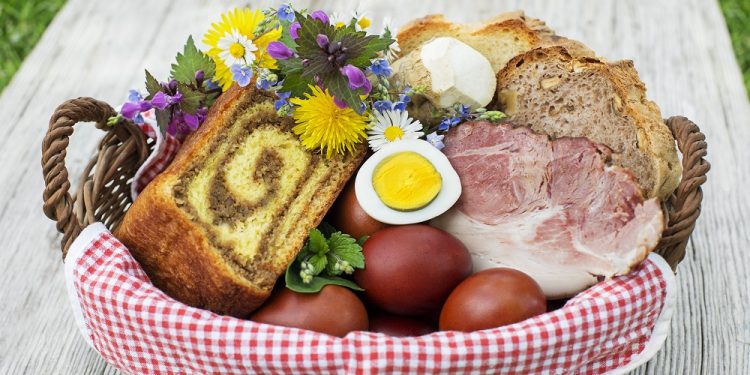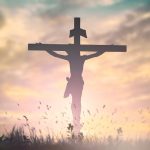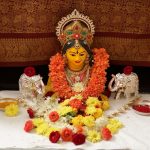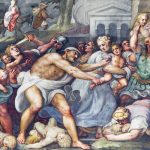
Easter
The Christian observance of Easter focuses on a single all-important event: Jesus Christ’s Resurrection from the tomb. The Resurrection is celebrated on Easter Sunday once a year and is a movable holiday, which means that it is not celebrated on the same calendar date every year. Easter Sunday falls on the first Sunday after the full moon that follows the northern hemisphere’s vernal equinox.
This was established by the First Council of Nicaea in 325 A.D. There are several holidays that precede Easter Sunday in anticipation of the celebration of the Resurrection. These events are sometimes referred to as the Easter Season and, in addition to Easter Sunday, include Mardi Gras (Carnival), Ash Wednesday, Lent, Palm Sunday, Holy Thursday, and Good Friday. Below is a summary of these events.
Mardi Gras (Carnival)
The Mardi Gras season takes place prior to Ash Wednesday and can last for a few days or a few weeks depending on where it is celebrated. In many areas, including New Orleans, Mardi Gras is the three or four-day period prior to Ash Wednesday. Mardi Gras is considered to be either a Christian or Catholic celebration.
The idea of the Mardi Gras celebration runs somewhat counter to the rest of the Easter Season, but to partakers, the event can serve an important purpose. Essentially, Mardi Gras is the practice of individuals over-indulging in various activities, particularly in those activities that they will be giving up for the Lenten season.
These activities can include eating soon-to-be forbidden foods or drinking spirits. The final day of Mardi Gras is Fat Tuesday (Mardi Gras translated to English is Fat Tuesday), the day prior to Ash Wednesday. There are many traditions surrounding Mardi Gras, including eating King Cake and watching parades with Grand Marshals.
Ash Wednesday
Ash Wednesday is the first day of Lent, a period of fasting that is celebrated prior to Easter. During the Ash Wednesday church service, priests will bless ashes, and then use the ashes to form the Sign of the Cross on the foreheads of the members of the congregation. The ashes are made by burning palm leaves from the previous year’s Palm Sunday.
The symbolism of the ashes can be heard in the following statement: “Remember that you are dust, and to dust you shall return.” This statement is repeated by the priest as a cross is made on each member’s forehead.
Lent
The season of Lent lasts for 40 days (if Sundays are not counted, the season lasts for a total of 46 days). The Lenten season takes place from Ash Wednesday until Easter. During Lent, observers will often fast or give up something they enjoy, or quit a poor habit.
Holy Thursday
Holy Thursday falls on the Thursday prior to Good Friday and Easter. On Holy Thursday, observers celebrate the Last Supper, the supper that Jesus had with His disciples on the night before His crucifixion.
The following famous verses are from the Book of Matthew in the New Testament of the Bible and describe some of the events that took place during the Last Supper: “And as they were eating, Jesus took bread, and blessed it, and broke it, and gave it to the disciples, and said, ‘Take, eat; this is my body.’ And He took the cup, and gave thanks, and gave it to them, saying, ‘Drink from it, all of you.'”
Good Friday
Good Friday is the observance of Jesus Christ’s trial, sentence, carrying of the cross, and crucifixion. It is up for debate as to whether the events actually took place on a Friday or on a Wednesday, but the observance will likely remain on the Friday before Easter until evidence overwhelmingly supports otherwise.
According to the Gospels of the New Testament, on the day of Jesus’ trial, Jesus is brought before Pontius Pilate, who was the prefect or governor of Judea at the time. Pilate questioned Jesus in regard to the charges that Jesus claimed to be the Son of God.
Jesus did not deny the charges. Matthew 27:11 states the following: “Meanwhile Jesus stood before the governor, and the governor asked him, ‘Are you the king of the Jews?’ ‘You have said so,’ Jesus replied.” It was traditional at the time for the governor to release a prisoner of the crowd’s choosing during the Feast of the Passover.
Pilate offered two individuals to the crowd: a notorious murderer named Barabbas, and Jesus. According to John 18:40, the crowd shouted to Pilate, “Not this man, but Barabbas!” Although sources indicate that Pilate could find no fault in Jesus, Pilate handed Jesus over to be flogged.
Following the flogging, a crown of thorns was placed on Jesus’ head, and He carried His own cross to a place called Golgotha. There He was crucified along with two other individuals, one on each side and Jesus in the middle. A sign was hung above His head that stated “Jesus of Nazareth, King of the Jews.” At the sixth hour, darkness fell over the land, and at the ninth hour, Jesus gave up His spirit.
Easter
Easter is celebrated by Christians around the world to remember that Jesus died on the cross so that the sins of humanity would be forgiven. The accounts given in the Gospels of the New Testament provide details of the events that took place after the crucifixion. The following is again a summary of those accounts.
In the evening after Jesus died on the cross, a rich man by the name of Joseph of Arimathea requested to take Jesus’ body from Pontius Pilate. Pilate agreed, and Joseph wrapped the body in a clean, linen cloth (Matthew 27:59). He then placed the body into a new tomb that he had cut out of rock and rolled a big stone in front of the entrance.
The following day, the chief priests asked Pilate if he would provide protection for the tomb. The reason for this is that the priests remembered that Jesus had stated He would rise after three days, and they did not want Jesus’ disciples to steal Jesus’ body in order to make it appear that He had risen from the dead.
From Matthew 27:63: “‘Sir,’ they said, ‘we remember that while he was still alive that deceiver said, ‘After three days I will rise again.'” “So give the order for the tomb to be made secure until the third day. Otherwise, his disciples may come and steal the body and tell the people that he has been raised from the dead. This last deception will be worse than the first.”
Pilate agreed and provided a soldier or soldiers to guard the tomb. The soldiers made the tomb secure by sealing the tomb and then posted a watch. The following morning, Mary Magdalene and another Mary went to visit the tomb. According to Matthew, they were then visited by an angel of the Lord, who made the guards shake and become like dead men.
He then tells the women this: “Do not be afraid, for I know that you are looking for Jesus, who was crucified. He is not here; He has risen, just as He said. Come and see the place where He lay. Then go quickly and tell His disciples: ‘He has risen from the dead and is going ahead of you into Galilee. There you will see Him.’ Now I have told you.”
On the way to Galilee, Jesus appears to the women and tells them not to be afraid. This is a summary of the Resurrection and the focal point of the celebration of the Easter holiday.
The Easter Bunny and other non-Christian Easter celebrations
Today’s celebrations of Easter can sometimes be a combination of pagan and Christian ideas. Although the two have very separate beginnings, they do share a few common traits, which many might consider coincidental. The pagan celebrations today generally involve the Easter bunny, Easter eggs, and other Springtime creatures and themes.
The name of the holiday, Easter, is actually derived from the name of a Spring goddess of Anglo-Saxon mythology named Eostre or Easter. The festivities for the goddess were held by the Anglo-Saxons in the month of April. This month was also referred to as Eostremonath.
Like many other Springtime festivals throughout history, celebrations surrounding Eostre and Eostremonath revolved around rebirth and fertility, and the idea of things beginning anew. The strongest ties between the pagan and Christian celebrations probably lie in the timing.
Many sources indicate that it is highly probable that the crucifixion of Jesus Christ, and His Resurrection, occurred in the month of April. This is found in the Gospels and other books in the New Testament. The other common trait that the two separate celebrations have is rebirth. Springtime is a time of rebirth, and Jesus’ Resurrection symbolizes rebirth to humanity. That the two occur during the same time of the year may, or may not be, purely coincidental.
Celebrations of Easter around the World
The Pope addresses St. Peter’s Square – The Pope addresses the masses in St. Peter’s Basilica and St. Peter’s Square in the Vatican and delivers “Urbi et Orbi” (To the City and the World). Often the message urges peace around the world, particularly in areas of conflict.
The White House Easter Monday Egg Roll – National Easter egg rolls were originally held on the grounds of the United States Capitol, dating back to the early 1800s. In 1878, the event, which was gaining much attention, was moved to the grounds of the White House. Rutherford B. Hayes was president at the time of the transition, and the Easter egg rolls have been held at the White House ever since.








